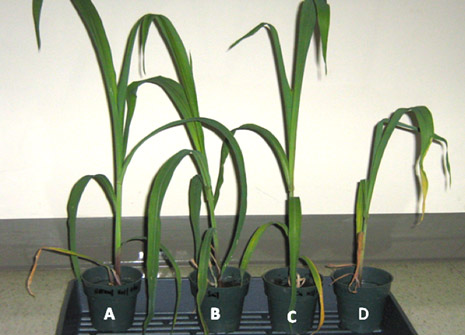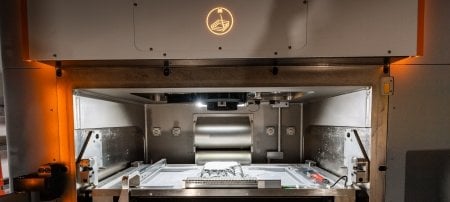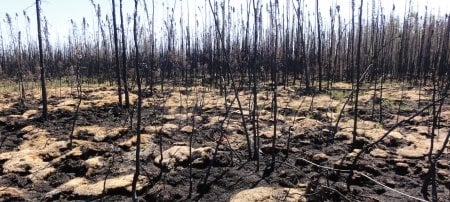Plants Can Thrive in Copper-Tainted Soils with a Little Help from Bacteria, Michigan Tech Researcher Finds

When miners abandoned Michigan’s Copper Country, they left a lot of the red metal behind, and not in a good way. Waste from the mining operations still contains a high fraction of copper, so high that almost nothing can grow on it—and hasn’t for decades, leaving behind moonscape expanses that can stretch for acres.
Now, however, Ramakrishna Wusirika’s research team may have discovered how to make plants grow in the mine-waste desert and soak up some copper while they are at it.
Wusirika, a biological sciences professor at Michigan Technological University, began his research using several species of Pseudomonas bacteria from the sediments of Torch Lake. In the region’s copper-mining heyday, the lake was used as a dump for mine waste. “We found bacteria that are resistant to high levels of copper,” he said. “We thought we might be able to use them to help plants grow better on contaminated soils.”
So Wusirika’s research team added copper to soil samples and then inoculated them with a copper-resistant strain of Pseudomonas. Finally, they planted the samples with maize and sunflower seeds and waited.
As expected, seeds planted in copper-free soil thrived, and seeds planted in the copper-tainted soil without bacteria were stunted. But seeds planted in the coppery soil enriched with bacteria did much better; some were nearly as vigorous as plants grown without the toxic metal.
“The bacteria seem to help with plant growth, and they also help maize and sunflower uptake copper,” said Wusirika. That means some kinds of naturally occurring bacteria could make soil more fertile and, in concert with the plants, remove at least some of the copper, a process known as rhizoremediation.
Their work, coauthored by PhD student Kefeng Li and Wusirika, was published online March 1 in the Journal of Hazardous Materials. For their next project, Wusirika’s team has been testing how well their technique might work in a real copper-mining desert. They are in the process of using these bacteria to promote plant growth in stamp sands collected near the small Upper Peninsula village of Gay, where the copper-processing byproduct covers about 500 acres.
Michigan Technological University is a public research university founded in 1885 in Houghton, Michigan, and is home to more than 7,000 students from 55 countries around the world. Consistently ranked among the best universities in the country for return on investment, Michigan’s flagship technological university offers more than 120 undergraduate and graduate degree programs in science and technology, engineering, computing, forestry, business and economics, health professions, humanities, mathematics, social sciences, and the arts. The rural campus is situated just miles from Lake Superior in Michigan's Upper Peninsula, offering year-round opportunities for outdoor adventure.




Comments